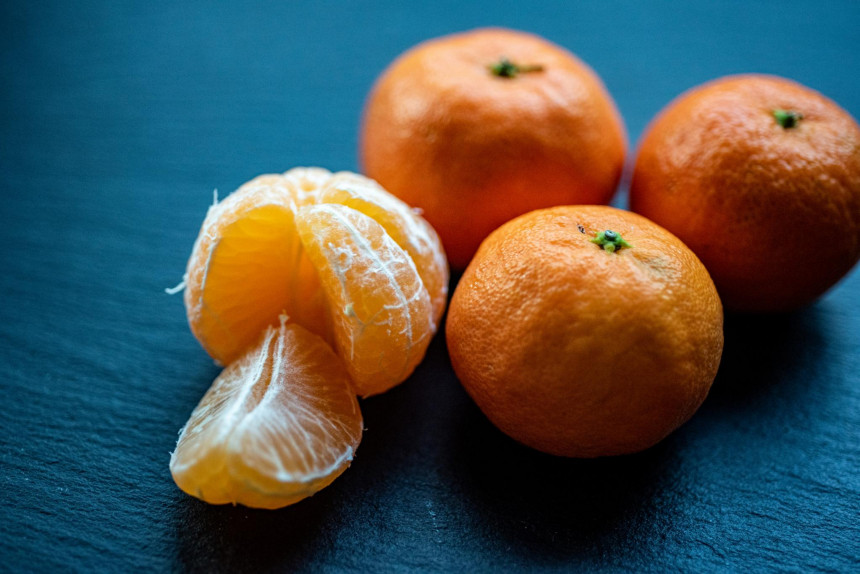Fake news about the harmfulness of tangerines came from Russia

During the post-Christmas period, one of the most popular stories on the portals was about the "dangerous facts about tangerines".
There are websites (including - A dangerous fact about tangerines has been revealed) that uncritically republished statement posted on the Russian portal lenta.ru by a "Doctor of Science" Olga Grigoryan that excessive use of tangerines can be dangerous for several groups of people, including overweight people and children. Indeed, on December 10, information was published on the Russian portal lenta.ru with reference to Olga Grigoryan, an employee of the Russian Federal Research Centre of Nutrition and Biotechnology. However, Olga Grigoryan is not a doctor of science, but only a candidate for the degree of doctor of science in Russia. The article refers to a Russian federal project. In the article, the doctoral candidate expressed the view that overweight people should give up or severely restrict the use of tangerines on the grounds of the high sugar content of the fruit.
If indeed high-sugar fruit were not recommended at all for overweight people and children, it would be normal, logical, and understandable to address the relevant risk groups by urging them to give up high-sugar fruit altogether or significantly reduce all high-sugar fruits in their daily consumption. Especially because tangerines are not the only fruit with high sugar content.
According to the food composition tables used in Latvia (Zigurds Zariņš, Lolita Neimane, Edgars Bodnieks “Uztura mācība (Septītais pārstrādātais un papildinātais uzdevums)”. Latvijas Universitātes Akadēmiskais apgāds, Riga, 2018 - pp. 306-397), the total amount of sugars in the edible part of tangerines per 100 grams of product is 10.1 grams. That's about as much as the popular sweet and sugary drinks, including the two most popular colas. One glass of cola or any soft drink contains as much sugar as 200 grams of peeled tangerines. When evaluating the amount of sugar in the edible part of fruits and berries, tangerines are nothing special. More sugar than in tangerines is found in apples (10.3 g per 100 grams of edible part), pineapples (12.3 g), melons (12.4 g), mangoes (12.5 g), sweet cherries (13.2 g ), much more sugar than in tangerines is in the edible parts of grapes (14.8 g), pomegranates (16.1 g), persimmons (16 g), bananas (17.3 g). Of course - there are different sugars. The fruits contain both sucrose - the regular sugar, which is industrially obtained from sugar cane or sugar beet, as well as glucose and fructose. Even if we evaluate only sucrose, its content per 100 grams of the edible part of the fruit is 9.5 g in melons, 10.3 g in bananas, and it is much more than in tangerines (7.1 g).
Of course, there are fruits that have less sugar than tangerines. 100 grams of the edible parts of orange contain 8.3 g of sugar, there is 8.3 g in watermelons and 9.1 g in kiwi.
By evaluating the chemical composition of fruits, berries, drinks, etc. to claim that overweight people and children should avoid precisely tangerines is completely wrong. Just as with any food, it is a question of quantity and individual characteristics of people, which do not apply to absolutely everyone.
Why researchers involved in the Russian federal project have begun to expose tangerines instead of, for example, apples can only be guessed at. Tangerines were one of the few exotic fruits available during the USSR. At that time, the main place of cultivation of local tangerines was in the subtropical part of Georgia. It was the only local fruit that was available (albeit to a limited extent) fresh in the middle of winter, as tangerines ripen in Georgian gardens in December and January. During the USSR, tangerines became a very popular delicacy in all end-of-year celebrations, and this is still the case in the former USSR countries (including Latvia). Modern Russia, on the other hand, no longer includes significant areas of subtropical regions. The southern republics of the USSR have been independent states for 30 years. Virtually all citrus fruits must be imported into Russia. In 2019, Russia imported citrus fruits for 1.3 billion US dollars (trademap.org data). A third ($ 423 million) of Russia's citrus imports come from tangerines. In turn, 38% of all tangerines imported to Russia in 2019 were supplied by Turkey. If since 2014 Russia has already partially replaced the previously imported dairy products with domestic products, then it is not possible to replace imported citrus fruits with Russian citrus fruits. However, by reducing the consumption of citrus fruits, one can try to increase the cultivation and consumption of local fruits. Therefore, reducing the consumption of tangerines in favor of fruit and berries grown in Russia is an important element of Russia's import substitution strategy.
It may be that one or the other sensation about the harmfulness of a particular product is only part of an ideological campaign to restrict imports and has nothing to do with the real harmfulness or safety of products. Ideological campaigns highlighting the harmfulness of certain products, which once targeted Moldovan wines, Georgian mineral waters, etc., looks like it is the turn of tangerines this year.
Amount of sugar per 100 g of the edible part of fruits and berries, g
| Bananas | 17.3 |
| Pomegranates | 16.1 |
| Bananas | 17.3 |
| Pomegranates | 16.1 |
| Persimmons | 16.0 |
| Grapes | 14.8 |
| Sweet cherries | 13.2 |
| Mangoes | 12.5 |
| Melons | 12.4 |
| Pineapple | 12.3 |
| Apples | 10.3 |
| Tangerines | 10.1 |
| Kiwi | 9.1 |
| Oranges | 8.3 |
| Watermelons | 8.3 |